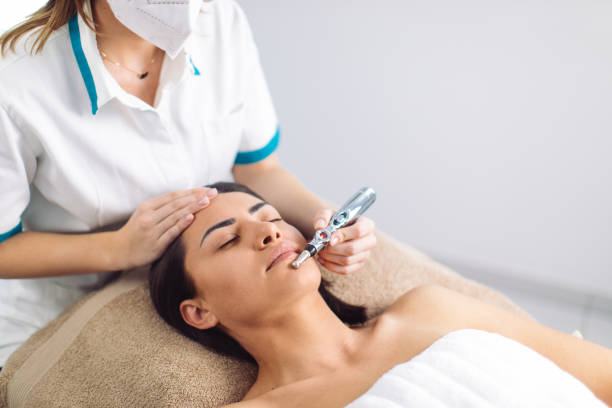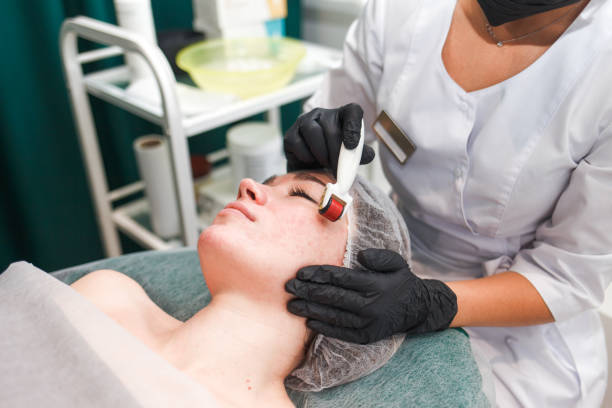Dermaplaning is renowned for its ability to provide a smoother, brighter complexion, often resulting in the removal of fine facial hair and dead skin cells. However, despite its appealing benefits, there’s a risk of nicking the skin and causing a cut. If you’re dealing with such a dermaplaning dilemma, fear not. This article will walk you through the steps you need to take if you cut your face dermaplaning, ensuring you can manage the situation promptly and effectively to minimize any complications, such as infection or scarring.
Understanding Dermaplaning and Its Risks

Dermaplaning involves the use of a sterile surgical scalpel to gently scrape off the top layer of dead skin. It’s a precision-based exfoliation technique that can leave your skin feeling baby-soft but not without potential pitfalls. A slip of the hand could result in a superficial cut, which while typically minor, still requires proper care. As with any procedure that involves a blade, there’s a small chance of cutting the skin, so understanding the proper aftercare techniques is essential.
Immediate Actions Post-Cut: Stopping the Bleeding

The sight of blood might be alarming, but remaining calm is crucial. Your first order of business is to stop the bleeding and reduce the risk of further injury. Follow these steps:
- Wash your hands thoroughly with soap and water to avoid introducing bacteria to the wound.
- Gently press a clean, sterile gauze or cloth against the cut to help clot the blood.
- Continue to apply pressure for a few minutes until the bleeding has stopped.
If bleeding persists after several minutes of continuous pressure, seek medical attention, as you may need professional care.
Infection Prevention: Clean and Protect the Wound
With the bleeding under control, the next step is to prevent infection. A cut on your face is not just a cosmetic concern; it’s an open invitation for bacteria. To keep the cut clean:
- Rinse the wound gently with lukewarm water to clear away any debris.
- Pat the area dry with a clean towel, being careful not to rub the cut.
- Apply an over-the-counter antiseptic to disinfect the area.
If the cut is in an area prone to movement or if you’ll be sleeping soon, consider using a breathable, sterile bandage to protect it.
Monitoring for Signs of Infection
After the initial care, it’s important to monitor the wound for any signs of infection. These can include increased redness or swelling, the wound feeling hot to the touch, or oozing of pus or other fluids. If you observe any of these symptoms, or if the cut does not seem to be healing after several days, it’s essential to consult a healthcare professional promptly.
Once your cut is on the mend, maintaining a gentle skincare routine will support the healing process. Avoid exfoliants and retinoids, and continue to keep the area moist with a simple, fragrance-free moisturizer. Always use sunscreen, as fresh scars are particularly susceptible to sun damage, which can affect their appearance long-term.
Long-Term Considerations: Scar Prevention and Treatment
No one wants a permanent reminder of a dermaplaning accident. Fortunately, there are measures you can take to minimize scarring:
| Scar Treatment | Description | Effectiveness |
|---|---|---|
| Silicone Gel Sheets | Self-adhesive sheets that hydrate the scar area | May reduce scar thickness and discoloration |
| Laser Therapy | Focuses light to break down scar tissue | Can improve skin texture and appearance |
| Over-the-counter Scar Creams | Creams to promote healing and reduce visibility | Results vary, some may fade or soften scars over time |
As each scar is unique, you might find some treatments more effective than others. For severe or persistent scars, a consultation with a dermatologist is advisable.
When to Consult a Professional
While many cuts from dermaplaning can be treated at home, there are certain situations where professional advice is necessary. If you have any concerns about the severity of the cut, if it’s not healing properly, or if you notice signs of infection, don’t hesitate to reach out to a dermatologist. They can provide tailored advice and treatment options to ensure the best possible outcome for your skin.
Dermaplaning Safety: Tips for Avoiding Future Cuts
To avoid future mishaps, here are some tips:
- Always use a clean, sharp blade specifically designed for dermaplaning.
- Work in good lighting and use a magnifying mirror if needed.
- Hold your skin taut and use gentle, short strokes.
- If you’re new to dermaplaning, consider having it done professionally first to learn the proper technique.
Remember, an ounce of prevention is worth a pound of cure. Taking these precautions can help ensure a safer and more effective dermaplaning experience.
Conclusion
In conclusion, cutting your face during dermaplaning is an unwelcome setback but one that can be managed with appropriate care. Quick action to stop bleeding, a vigilant cleaning routine, and cautious aftercare are your best defenses against complications. Remember, precisely executed dermaplaning can offer excellent results, but caution and care are always your allies in skincare. Should you have any concerns or experience signs of infection, seek professional guidance to keep your skin healthy and resilient.
FAQs
Q1: How long does it typically take for a cut from dermaplaning to heal?
A1: The healing time can vary depending on the depth and size of the cut but typically, superficial cuts heal within a week. If a cut is deeper or becomes infected, healing may take longer.
Q2: Can I apply makeup to cover a cut after dermaplaning?
A2: It’s best to avoid applying makeup directly to a fresh cut as it can lead to infection and hinder the healing process. Once the cut has formed a protective scab, you may carefully apply makeup if necessary.
Q3: Is it common to cut oneself while dermaplaning?
A3: While minor nicks can occur, especially with inexperience or improper techniques, significant cuts are not common when dermaplaning is done correctly and with the appropriate tools.
Q4: How can I tell if a dermaplaning cut is infected?
A4: Signs of infection include persistent redness, swelling, warmth, pain, pus, or the cut not healing over time. If you notice these signs, consult a healthcare provider.
Q5: Should I avoid certain skincare products after getting a cut from dermaplaning?
A5: Yes, avoid using exfoliants, retinoids, and products with high concentrations of acids on the cut area as they can irritate the wound and slow healing. Stick to gentle, non-irritating products until the skin has fully recovered.
